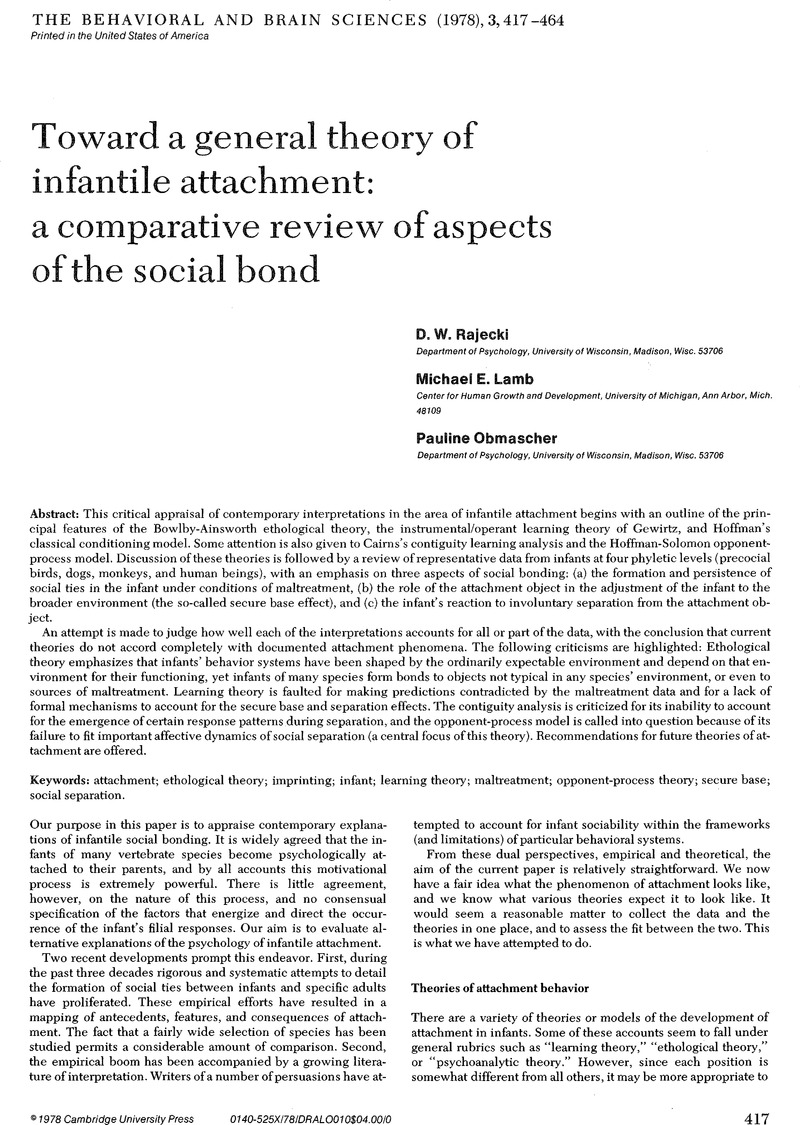Crossref Citations
This article has been cited by the following publications. This list is generated based on data provided by Crossref.
Heard, D. H.
1981.
THE RELEVANCE OF ATTACHMENT THEORY TO CHILD PSYCHIATRIC PRACTICE.
Journal of Child Psychology and Psychiatry,
Vol. 22,
Issue. 1,
p.
89.



